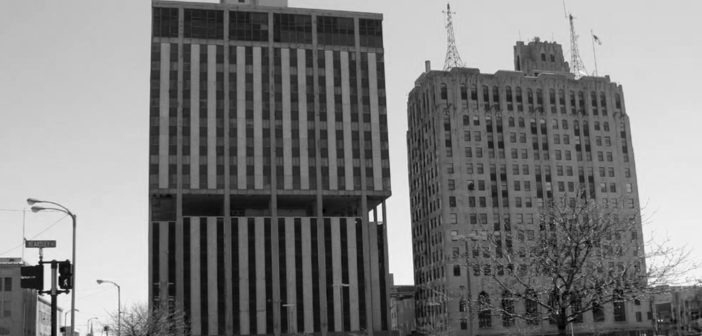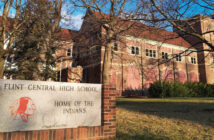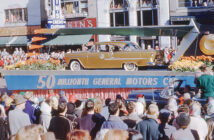The tumultuous sixties began innocently. John F. Kennedy won the 1960 presidential election over Richard M. Nixon by the slimmest of margins causing a majority of Americans to envision a clearly promising and progressive future; but by 1962, that vision grew a little hazy during the bleak, fear-ridden days of the Cuban Missile Crisis.
The campaign for Civil Rights was in full swing when, in August of 1963, Martin Luther King, Jr. delivered his famous speech in Washington, D.C. inspiring a nation. Then, in November, the hope for a better day was nearly extinguished when Kennedy was assassinated. After taking over the presidency, Lyndon B. Johnson honored Kennedy’s commitments and signed the landmark Civil Rights Act outlawing discrimination based upon race, color, religion, sex or national origin. Immediately thereafter, dubious information from the Gulf of Tonkin off the coast of Vietnam triggered a U.S. military response that would begin the tragic and costly Vietnam War.
In March of the following year, Martin Luther King led a march from Selma to Montgomery, AL, to protest for voting rights. By August, President Johnson would sign the Voting Rights Act, prohibiting racial discrimination in voting. Sadly in 1968, at a hotel in Memphis, TN, King was fatally shot and in July of the same year, Robert Kennedy was also murdered in California.
In Flint, the 60s began with a new vision of the city and a warning as to what the future might hold. The face of the city would be altered physically and socially as the decade continued. Flint would have its own say on Civil Rights and the nation. Change is gonna come. This is Flint in the ‘60s.
1960-64: Warning and Water
In the summer of 1960, Flint was coming off one of its most prosperous decades. The city’s population hit its highest peak at almost 200,000 people, making it the second largest city in Michigan. Flint’s population and middle-class, hardworking ideals made it a destination for politicians on the campaign trail and baby-faced John F. Kennedy was no exception. In early September (just before the historic television debate between Nixon and Kennedy), the young hopeful rode down Saginaw Street in a Buick convertible on his way to Atwood Stadium. Over 13,000 people had gathered to see Kennedy take the podium and deliver his speech. In it, he spoke of his travels and what he saw for the country’s future.
To Flint, he delivered a warning of what the future might bring to those in the auto industry. “In the last five years in the auto industry in this state, you have lost, because of automation, 10,000 jobs, and this has been a matter of indifference to the Federal Government,” he said. “I do not recall hearing this administration ever discuss it, and unless we begin to attack it, not as a problem in one plant or in one company, but as a national problem which demands our attention, then by 1970, the blight of [automation]could spread across this country.” He then gave a plan to fix the problem of automation and job loss that never came to be. “First, I think the Federal Government should convene a conference of union leaders and industrial leaders in the basic industries, to discuss with them how they can maintain full employment, whether they move in new machines. Secondly, we must make it plain that the installation of new machinery is a proper subject for collective bargaining. Third, the Government must offer technical assistance to those companies which want to bring in new machinery, but want to do so without undue hardship to the workers. Four, we should expand the activities of the U.S. Employment Service so that we can take care of those people who are hard hit. Fifth, we have to provide job retraining and also decent unemployment compensation standards on a Federal level for those who are thrown out of work.” Kennedy would visit Flint a second time, delivering a speech at City Hall in 1962.
Another warning to the city came earlier in the year with the publication of the new Flint Master Plan. It showed that Flint relied on manufacturing in an amount that far exceeded every other city in the United States. At the time of the 1960s Master Plan, nearly 90 percent of all dollars made in Flint were tied to GM, in particular, and manufacturing in general. The Master Plan recommended differentiation of employment if Flint was to maintain its trajectory and growth. The 1960s Master Plan never was completely realized – only a few projects were ever completed. The Plan was commissioned in 1958, but doomed before it was ever released due to the failure of the GM plan for New Flint.
In the late 50s, Flint was running out of room. There was no space to expand factories or even build new housing. Plots were small, cramped and in many cases (such as the St. John Street neighborhood), polluted by industrial waste and poor air quality. Those who could afford to leave were moving into the suburbs of Grand Blanc, Davison, Swartz Creek, Flushing, etc. To gain more land and tax revenue, GM urged Flint to annex the suburbs. The suburbs balked and eventually won out over the plans of the city. Flint was stuck at today’s size and with a fleeing tax base and no more room for industry, progress suffered. However, the 1960 Master Plan contributed to Flint in three major ways. The first two involved education. Per Master Plan recommendations, Northwestern High School opened in 1964 and in 1971, Northern High School would move from its first location on McClellan Street to Mackin Road to alleviate overcrowding. The 1960 Master Plan’s third and largest impact was its recommendation for and placement of the I-475 and I-69 highways.
In the 50s, GM was having a hard time moving parts from one city to another due to traffic congestion and small roads. In order to enhance efficiency, GM lobbied federal, state and local officials for additional highway construction to and through Flint. Most officials agreed and plans were drawn up to include the 1960 Master Plan for new highways I-475 and I-69. Besides the advantages the highways gave GM, many believed that I-475 would revitalize the Downtown Flint economy. The plans included removal of homes in the predominately black neighborhoods of St. John Street and Floral Park. In 1964, the city commission formally adopted a program to remove and relocate the 3,000 families in these neighborhoods to new housing. In the early ‘70s, I-475 opened in sections and opened completely in 1981. I-69 was completed in Flint in 1973.
The removal of the St. John Street and Floral Park neighborhoods struck a chord with Civil Rights activists in a city that was making great gains along those lines. In 1961, Joe Davis became Flint’s first black firefighter while Flint attorney Otis M. Smith became the first black Michigan Supreme Court Justice. In 1963, Ollie B. Bivens, Jr. became the first black municipal judge in Flint and Dr. T. Wendell Williams became the first African-American man elected to the Flint Board of Education. Williams-Edison Elementary School in Flint was named after him.
Motown found its way to Flint when Norma Barbee Fairhurst and Bertha Barbee McNeal joined The Velvelettes. Their hits included “Needle in a Haystack” and “He Was Really Sayin’ Something.” Flint was moving forward with the rest of the nation and the city would really make a splash in Civil Rights later in the decade.
In 1964, a scandal occurred that would inadvertently shape the city years into the future. Flint was looking for a new water source and plans were made to build a pipeline to supply water from Port Huron. Flint City Manager, Robert A. Carter, leaked project information to Claude O. Darby Sr., who sought out Flint millionaire, Samuel M. Catsman to purchase land needed for the pipeline. Three months later, Carter named Darby as the confidential land agent tasked with buying up land for the pipeline on behalf of the city. He recommended the land purchased prior for Catsman, which was sold to the city at a considerable markup, lining the pockets of Catsman and Darby. When the scheme was discovered, Darby, Catsman and Carter were arrested for their roles. All charges were subsequently dropped (many believe there was undue influence by Catsman). Had the project moved forward, Catsman would most likely have won a majority of the contracts. Within six months, the city abandoned its plans for a pipeline and signed a contract to buy water from the city of Detroit for the next 30 years. In 1967, Detroit water began flowing into Flint. There is no way to tell what may have happened had the city decided to build the pipeline to Port Huron water in 1964.
1965-69:A Big Step Toward Equality
In the latter half of the decade, Civil Rights were the main focus in Flint. Diversity has always powered the city and it was beginning to get the recognition it deserved. In 1966, the Flint City Commission tapped Floyd McCree, a foreman at Buick and fellow commission member, as mayor. McCree would be the first African-American mayor of a major U.S. city. Also in ‘66, William C. Byrd took over the direction of the Flint Symphony Orchestra. (In 1974, Byrd would suffer a fatal heart attack during a concert in Wilson Park. The William C. Byrd Competition would be created to honor his memory.) Eisenhower Elementary school opened at the beginning of the school year named after the former President. Flint’s own Arthur Summerfield presented the school with a portrait of General Eisenhower.
In 1967, things were boiling over. Termed the “long hot summer,” race riots erupted in cities all over the country and Flint was no exception. Flint was highly segregated due to discriminatory housing laws and redlining – the practice of denying mortgage insurance, loans based on geographic, socio-economic and racial considerations. Due to this practice, African-Americans in Flint were relegated to the areas of St. John Street and Floral Park. On the night of July 24, following the nation’s lead, Flint rioted. During the riot, Mayor McCree called a state of emergency and immediately demanded a halt on the sales of liquor and gasoline. Over 100 people were arrested. County prosecutor, Robert F. Leonard, in a bid to de-escalate the situation, released all arrested on the condition that they go back to their communities and try to restore peace. His gamble worked – the rest of the night passed uneventfully.
After the riot, the lack of an open housing ordinance became a major source of displeasure for African- Americans in the City of Flint, and rightfully so. An open housing ordinance was placed before the City Commission on August 14. It was rejected, forcing Mayor McCree to resign in protest stating, “I’m not going to sit up here any longer and live an equal opportunity lie.” Soon thereafter, a ten-day sleep-in protest was organized on the lawn of Flint City Hall by Olive Beasley of the Civil Rights Commission, Woody Etherly Sr. and the Flint NAACP youth group. The sleep-in culminated in the largest civil demonstration in city history when over 5,000 people showed up in support on August 20. The crowd included Governor George Romney and state Attorney General, Frank Kelley. In a counter-protest, the Ku Klux Klan demonstrated in a march down Detroit Street, now (ironically) Martin Luther King Ave.
The Commission then re-voted on the ordinance and it passed 5-4. The Committee to Repeal Forced Housing took exception and quickly gathered enough signatures to force a public referendum. Over 40,000 votes were cast in the referendum and after a nerve-wracking recount, on February 20, 1968 Flint became the first U.S. city to pass a fair housing ordinance by referendum by a mere 30 votes. Soon, other cities across the country followed suit. The City of Flint continued to advance Civil Rights to the end of the year, when they named Dr. Clarence Kimbrough the first black president of the Flint Board of Education.
The decade wound down with some of Flint’s last significant developmental projects reaching completion. In 1967, the Sloan Museum and Whiting Auditorium opened for crowds interested in science and the arts. The Sarvis Center became available for classes, banquets and workshops of all kinds in 1968. Later in the year, the Genesee Towers Building opened on First Street. It was designed by Henry Sender and its initial tenant was the Genesee Merchant’s Bank & Trust Company. The University Club, a men’s only club, opened on the top floor of the building in 1969. The building would be Flint’s tallest until its demolition in December, 2013.
The year 1969 saw the completion of the IMA Sports Arena, bringing tennis, ice-skating and the city’s first hockey team. The Flint Generals opened as members of the International Hockey League. Coached by Ken Hodge, the inaugural season brought a record of 21-39-12. The first team was led by players Wally Kozak, Wayne Ego and Ron Ringler. Hockey would be a proud tradition in Flint up to present day, represented by the Flint Generals (1969-84, 1993-2010), the Spirits (1985-91), the Bulldogs (1991-93), the Warriors (2010-15) and the Firebirds (2015-present). For the ’69 school year, the city opened Williams Elementary and the Genesee Area Skill Center.
On July 16, Flint Mayor Donald Cronin and AC Spark Plug General Manager, Joseph A. Anderson were at Cape Kennedy, FL watching the launch of the Apollo 11 mission. The igniters for the rocket engines were designed and produced in Flint at AC Spark Plug. On July 20, when the citizens of Flint were glued to their TV sets watching the moon landing unfold, how many knew a part of Flint helped to make it happen?
The energy of the 1960s brought change throughout the country. Flint progressed in education, transportation and Civil Rights; but little by little, rust was beginning to form on the city and its industry. It was beginning to feel the constraints of its footprint and the effect of over-reliance on its industry. The car was still flying down road, pedal to the metal, hellbent on the horizon – but the first bolt was beginning to shake loose.
Other Notable Events Timeline
1960
- Flint Osteopathic Hospital opened.
1962
- Mott Children’s Health Center opened.
1963
- The Dresden Hotel was destroyed by fire.
- Retired Men’s Fellowship of Greater Flint organized.
1964
- Interfaith Community Council was established.
1965
- Flint Civic Orchestra organized.
1967
- Flint Cinema opened.
1968
- Holloway Reservoir Regional Park opened.
1969
- Concerned Pastors for Social Action Organized.
- Urban Coalition formed.
References
Adams, D. (2014). Civil Rights Office in Flint…for Equality. Mlive.com. Retrieved from mlive.com/news/flint/2014/02/civil_rights_work_in_flint_con.html
Braimah, A. (2017). Flint, Michigan Riot (1967). BlackPast.org. Retrieved from blackpast.org/african-american-history/flint-michigan-riot-1967/
Doherty, D. (2018). Sloan exhibit captures persistent intertwining…housing in Flint history. East Village Magazine. Retrieved from eastvillagemagazine.org/2018/02/03/review-sloan-exhibit-captures-persistent-intertwining-threads-of-race-and-housing-in-flint-history/
Flint Planning Commission. (1960). Comprehensive Master Plan. Ladislas, Segoe & Associates.
Ford, H.C. (2018). Fifty Years Later…Nation’s Racial Divides. East Village Magazine. Retrieved from eastvillagemagazine.org/2018/04/30/analysis-fifty-years-later-flints-fair-housing-campaign-still-reverberates-in-nations-racial-divides/
Highsmith, A.R. (2009). Demolition Means Progress. University of Michigan Dissertations.
Peters, G., & Wooley, J. T. (2019). Remarks of Senator John F. Kennedy, Flint, MI, Labor Day Rally. The American Presidency Project. Retrieved from presidency.ucsb.edu/documents/remarks-senator-john-f-kennedy-flint-mi-labor-day-rally
The Flint Club. (2006). Timeline of Flint. Flinthistory.com. Retrieved from: archive.li/jzTLw








